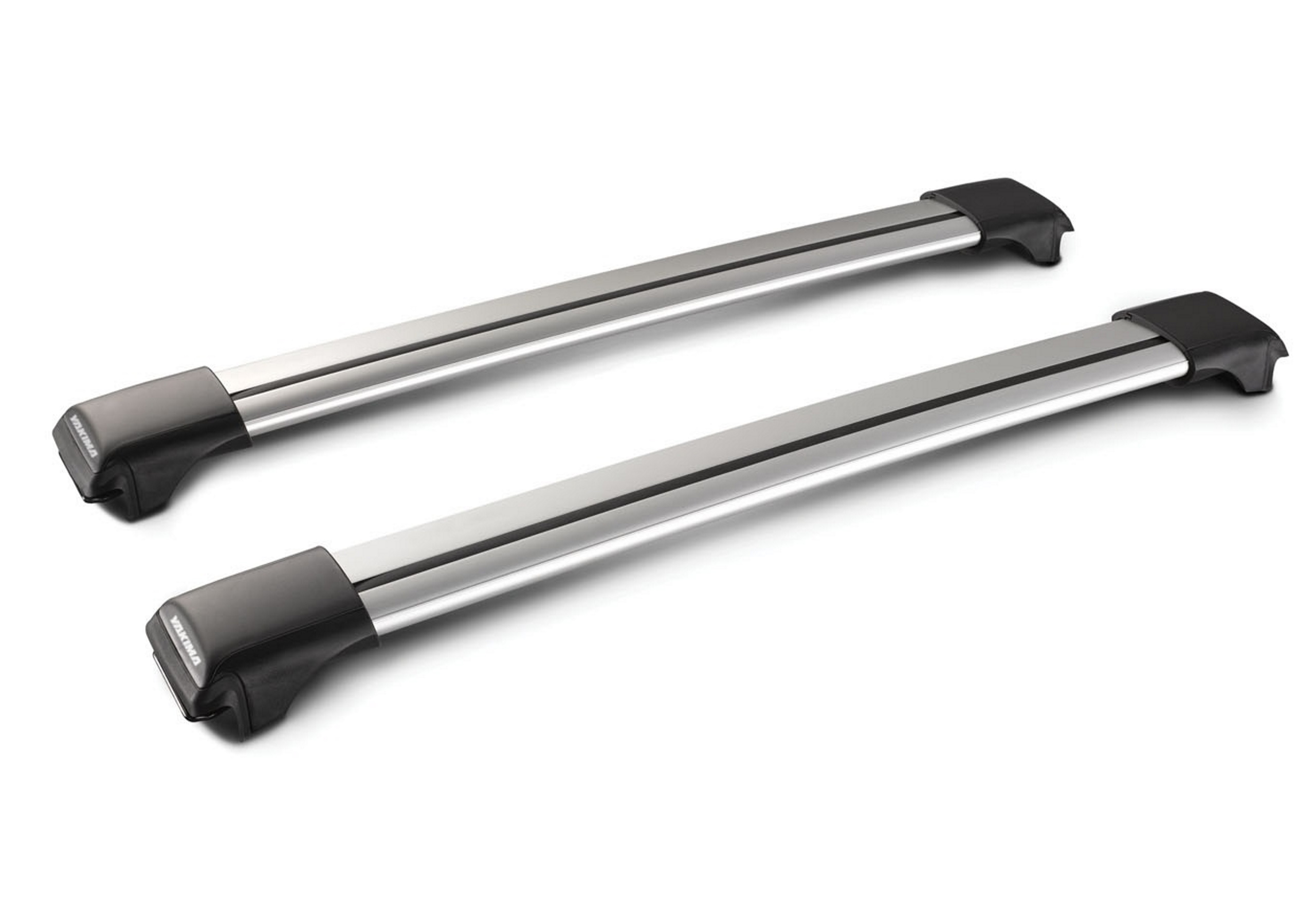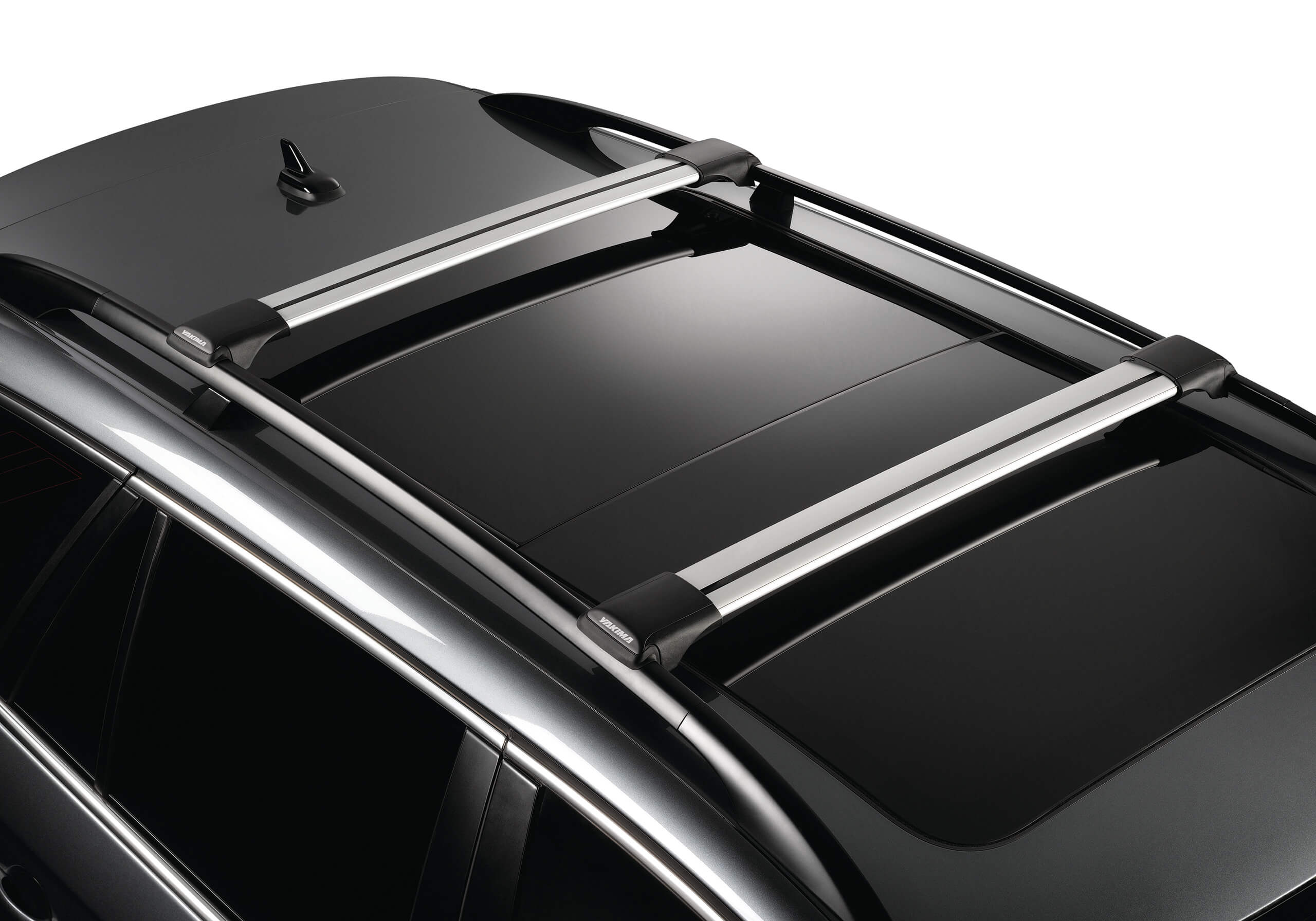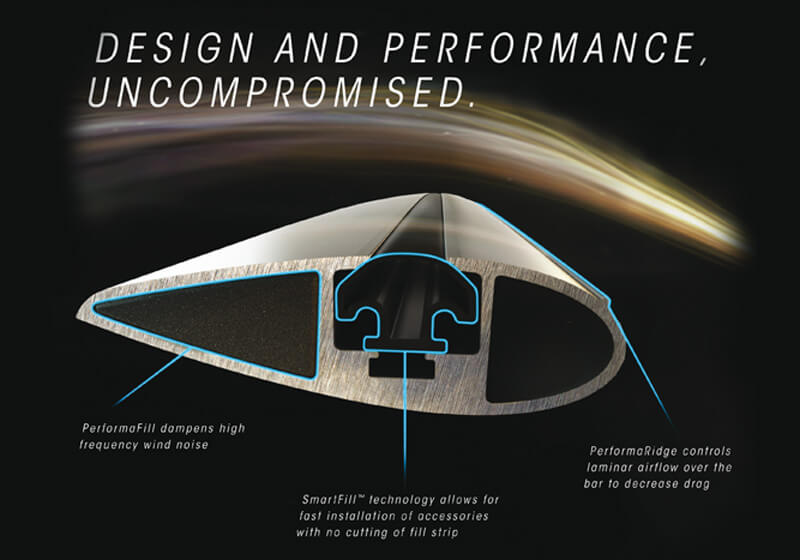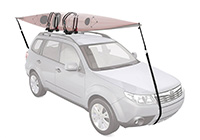Yakima roof bars package - S54 Aero-X silver bars
£184.95
In stock
Yakima Aero-X roof rail bars use the aerodynamic Whispbar profile so are almost silent in use, with a negligible impact on fuel consumption. And because they look superb you're likely to leave them in place semi-permanently.
The amount of gear you can carry on the Aero-X is limited by the length of the T-track slot, so if you do need to carry e.g. a roof box and bike carriers, please also check out the "through bar" option with fitting kit 328.
Yakima Aero-X roof rail bars use the aerodynamic Whispbar profile so are almost silent in use, with a negligible impact on fuel consumption. And because they look superb you're likely to leave them in place semi-permanently.
The amount of gear you can carry on the Aero-X is limited by the length of the T-track slot, so if you do need to carry e.g. a roof box and bike carriers, please also check out the "through bar" option with fitting kit 328.
|
Yakima's Aero-X roof rail bars not only include the award winning Whispbar aerofoil-shaped bar but are ultra-low profile; they fit between the roof rails. If you're just carrying a roof box or a couple of bikes or kayaks this might be ideal, but if you want to maximise the load carrying potential of your car then you should be looking first at Yakima's "through bar" system with fitting kit 328. Please note that it doesn't matter if the edge of a roof box rests on the plastic covers at each end of the Aero-X bars - just be sure before ordering that the T-track slot is as long as the distance between the roof bar fitting points in the roof box. Basic geometry:
Other features and specifications:
Yakima is (along with Thule) one of the two largest brands in the global car rack systems sector. Their Whispbar profile was the culmination of many years of design and innovation by Hubco Automotive, whose chief designer transferred his aeronautical design experience and know how to the roof rack sector, working closely with the engineering school at the University of Canterbury, New Zealand. The Whispbar aerodynamic profile was launched at the Frankfurt Automechanika trade fair in 2008, since when many other roof bar manufacturers have launched low drag / low noise roof bars. But none of these is as efficient, as low drag, as the Whispbar profile, partly because Hubco Automotive (now owned by Yakima), who created the whole concept and underpinned the designs with serious science, patented crucial aspects of their design. |
|
The aim of this note is to persuade you that kayaks should always be tied to the carrying vehicle at both bow and stern.
Untied kayaks have, in our experience, the greatest potential for a roof bar or kayak carrier failure. The massive forces that untied kayaks can generate have even been known to snap roof bar fixing bolts with the result that a complete assembly of roof bars and kayaks has ended up on the road. We know that this has happened with almost every brand of roof bar, and regardless of whether the kayaks are on a special carrier or just strapped to the bars. You need to fix bow and stern lines, probably using the front and rear screw-in towing eyes to get strong and accessible fixing points on the vehicle. Kayak shops should be able to provide suitable 'paracord' for this purpose. Alternatively, we have sets of straps available that are perfect for the job and are really easy to use. Yakima make some excellent Bow/Stern tie down straps and Thule makes the QuickDraw 838 which we have listed together with every kayak carrier we sell. Please note that kayaks should be strapped to the roof bars, or to kayak carriers, using straps that are suitable for the purpose, e.g. 25mm polypropylene straps with strong buckles. Bungee cords must never be used. Please also note that all roof bar instructions point out the dangers of carrying unsecured long items, as of course do all kayak carrier instructions. If you tie down your kayaks properly you almost certainly won't experience a product failure. If you don't you may or may not get away with it. If there is a disaster and the kayaks end up on the road, separated from the vehicle, then you were not using tie downs and you have subjected the roof bars to forces for which they were not designed. The costs of sorting this out are yours, not ours, and you may also have difficulties with your insurers. We're sorry to be so firm about this, but "things coming off the tops of cars" is the stuff of nightmares, and we want to do all we can to prevent accidents of this sort from happening. |
Delivery charges and arrangements:We charge a contribution towards delivery costs, depending on what you order, where you live, and how quickly you want the goods. These are our standard charges; there are usually surcharges for all offshore destinations and some remote postcodes - for details please see our delivery information page.
Delivery of other items
Delivery timesDelivery times are calculated in working days (Monday to Friday, excluding Bank holidays). Cut-off times for Express Delivery orders
Delivery FAQsWhen will my order arrive? What about Next Working Day delivery? Is my delivery day guaranteed? Do I need to be at home? Payment options:We take the following cards, and also PayPal. Please note that the entry on your card statement will be from "The Roof Box Company". 



Secure paymentsOur website is secured by Sectigo (formerly Comodo CA), the largest commercial Certificate Authority in the world. 

|
|||||||||||||||||||||||||||||||||||||
|
Yakima's Whispbar roof bar profile is still the most aerodynamic shape available, with less drag and less noise than any other roof bar shape. Reduced drag means better fuel efficiency. The aerodynamic profile was launched at the Frankfurt Automechanika trade fair in September 2008 - a mini wind tunnel was shipped in from New Zealand to show off the new technology. This was a long time ago now, but the fundamentals haven't changed. Note that the Whispbar profile was developed by Hubco; their business was later purchased by Yakima. Hear it for yourself. The commentary is a bit long-winded, but this video is still a unique insight into the noise that roof bars make, and the difference between square bars and aerofoil-shaped bars. Competitors have caught up as much as they can, to the extent that the human ear cannot tell the difference between the noise generated by several brands of roof bar profile - but the patented elements of the Whispbar profile still give it a much lower drag coefficient than its competitors. |
Roof top tents should not be fitted to these bars!Roof top tents are becoming increasingly popular, but we advise they are not suitable for fitting to these roof bars, which have plastic parts on their ends, similar to the ‘flush’ style of roof bars. In any event the usable bar length would be too short for fixing a roof tent. Roof top tents should only be carried on through bars, the type of roof bars where the cross bars stick out beyond the feet. There are concerns for both safety and damage if flush bars are used. Flush roof bars have a plastic-covered foot at each end of the bar. Even if the cross-bar part is wide enough for the roof top tent to be fitted, the tent will certainly be wider than the bars and the weight of a person pressing down on the raised foot can damage the plastic parts. From a safety perspective, the base of the tent is unlikely to be touching the cross bars, so it will be difficult to tighten the fixings correctly, and the fixings of some tents can loosen when people are in the tent, and it flexes. Full size platforms such as the Thule Caprock and the Yakima LockNLoad platform should also not be used on flush roof bars; they tend to be heavily loaded, and to be walked on. This is an easy problem to solve; please choose a pair of through bars - the type of roof bars where the cross bars stick out beyond the feet. |











